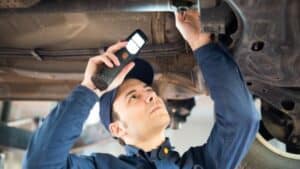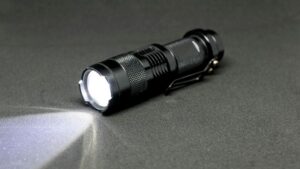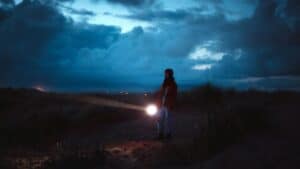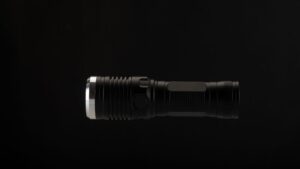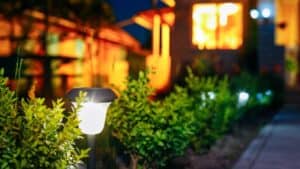Floodlights and spotlights may look similar, but they serve completely different purposes. Understanding their key differences will help you choose the right lighting solution for your specific needs—whether you’re securing your property, highlighting landscape features, or illuminating outdoor spaces.
This guide explains when to use each type of lighting and what to look for when making your selection.
Understanding the Fundamentals
Understand the core concepts that define how a light performs: beam angle and the measurement of its brightness.
What is Beam Angle?
The most significant difference between a spotlight and a floodlight comes down to beam angle. Imagine a cone of light extending from a bulb. The beam angle is the measure of how wide that cone is.
- 15° beam angle: Creates a very narrow, intense spotlight perfect for highlighting specific features
- 30° beam angle: Still considered spotlight territory, ideal for accent lighting with slightly broader coverage
- 60° beam angle: Transitional zone between spot and flood lighting
- 90-120° beam angle: True floodlight territory, providing wide area coverage
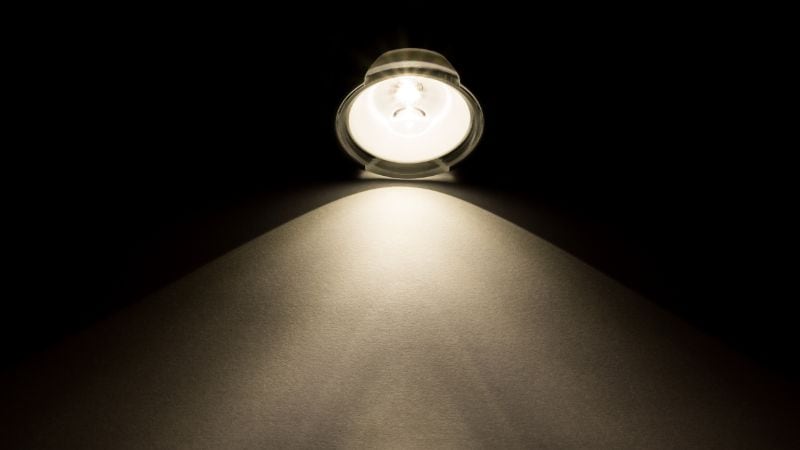
Think of it like a garden hose nozzle. A tight stream can spray a specific target from far away (like a spotlight), while a wide spray can water an entire flower bed at once (like a floodlight). This single factor—beam angle—determines whether a light is classified as a spot or a flood.
Understanding Candelas vs Lumens
When you shop for bulbs, you see “lumens” on the box, which measures the total amount of light a bulb produces in all directions. However, for directional lighting, candela (or candlepower) is an equally important metric.
- Lumens: Total light output. A high lumen value means a bright bulb overall.
- Candela: Luminous intensity. This measures the brightness of the light in a specific direction.
A spotlight concentrates all its lumens into a narrow beam, resulting in a very high candela rating. This means it appears incredibly bright when pointed at a target. A floodlight, even with the same lumen output, spreads its light over a wide area, so its candela measurement is much lower. For spotlights, high candela is key; for floodlights, high lumens are what matter most.
Spotlights: Focused, Intense Illumination
A spotlight does exactly what its name implies: it puts a “spot” of intense light on a specific object or area. It’s all about precision and drama.
Technical Specifications
- Beam Angle: Typically 45 degrees or less, with most true spotlights having a beam angle under 25 degrees.
- Light Pattern: A concentrated, narrow beam that creates sharp, well-defined shadows.
- Coverage: Limited and precise. You can aim it exactly where you need it without much light “spill” to the sides.
Key Features & Benefits
- Creates Drama: Spotlights are perfect for creating high-contrast scenes and drawing the eye to a focal point.
- Highlighting: They are the ideal tool for accent lighting, making architectural details, artwork, or landscape features pop.
- Long-Distance Reach: The focused beam allows a spotlight to illuminate objects from a significant distance.
Common Applications
- Outdoor: Illuminating a flag, a tall tree, a statue, or architectural columns on your home’s facade.
- Indoor: Track lighting focused on kitchen countertops, highlighting a painting on the wall, or providing focused light for a reading nook.
- Landscape: Making a single beautiful birch tree a nighttime centerpiece in your yard.
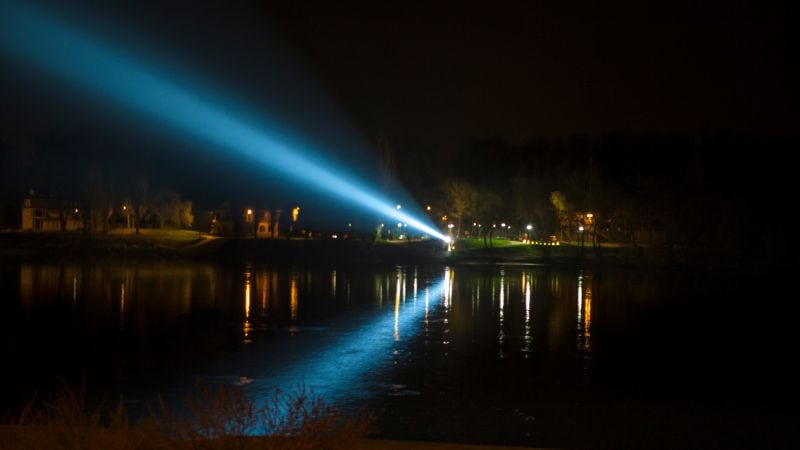
Floodlights: Wide Area Coverage
Where spotlights are for precision, floodlights are for broad coverage. They are designed to “flood” a large area with a consistent wash of light.
Technical Specifications
- Beam Angle: Always wide, typically between 90 and 120 degrees.
- Light Pattern: A wide, diffused spread of light that creates soft, faint shadows.
- Coverage: Expansive. A single floodlight can illuminate an entire driveway, patio, or small yard.
Key Features & Benefits
- General Illumination: Provides visibility and safety over a large space.
- Security: Their wide coverage makes them ideal for security lighting, eliminating large dark spots where intruders could hide.
- Consistent Brightness: Floodlights deliver an even level of light across their entire beam spread.
Common Applications
- Outdoor: Lighting up backyards, driveways, parking areas, and building facades.
- Security: Often paired with motion sensors to illuminate large areas when movement is detected.
- Work Areas: Used on construction sites or in workshops to provide safe, general illumination.
- Commercial: Lighting for sports fields, signage, and warehouses.

Difference between Floodlight and Spotlight
Where spotlights are for precision, floodlights are for broad coverage. They are designed to “flood” a large area with a consistent wash of light.
Technical Differences
| Feature | Spotlight | Floodlight |
| Beam Angle | ≤30° (typically ≤25°) | 45°+ (typically 90-120°) |
| Coverage Pattern | Narrow, focused circle | Wide, diffused area |
| Light Intensity | High candela, concentrated | Lower candela, spread out |
| Shadow Type | Sharp, well-defined edges | Soft, gradual transitions |
| Best Distance | Effective at longer distances | Most effective at closer range |
| Energy Efficiency | High efficiency for focused tasks | High efficiency for area coverage |
Practical Differences
Coverage Area: The most obvious difference is coverage area. A spotlight might effectively illuminate a 10-foot circle at 20 feet distance, while a floodlight could cover a 40-foot wide area at the same distance. This fundamental difference drives most application decisions.
Light Quality: Spotlights produce a concentrated “spot” of intense light with dramatic contrast between illuminated and non-illuminated areas. Floodlights create a broad “wash” of light with gradual transitions and more even coverage.
Installation Flexibility: Spotlights typically offer more adjustment options, allowing you to fine-tune the direction and focus of the beam. Floodlights are often fixed in position but cover such wide areas that precise aiming is less critical.
Fixture Design: You can often identify light type by fixture design. Spotlights typically feature round heads with focused reflectors, while floodlights use rectangular or oval housings with wider reflector systems.
Choosing the Right Light for Your Needs
Now, let’s apply this knowledge to common projects.
Application-Based Selection
Choose Spotlights When You Want To:
- Accentuate Features: Draw attention to the beautiful stone texture on your chimney, a prized rose bush, or a house number.
- Perform a Task: Illuminate a specific zone in your kitchen for food prep or aim a light directly at your grill for nighttime cooking.
- Create Visual Interest: Use several spotlights to create dramatic shadows and highlights in your landscaping.
Choose Floodlights When You Want To:
- Enhance Security: Light up the entire perimeter of your property to deter intruders.
- Improve Safety: Make sure pathways, stairs, and patios are fully visible at night.
- Enable Activities: Provide enough light to play basketball in the driveway or host a party on the deck after dark.
Combination Strategies: The Best of Both Worlds
Often, the most effective and professional-looking lighting designs use a combination of both. You might use floodlights to provide safe, ambient light for your entire backyard, while adding a few spotlights to highlight a beautiful water feature and a cluster of trees. This layered approach adds depth, dimension, and functionality.
MF Opto Recommended Products for Your Lighting Needs
For Precise Spotlight Applications
Handheld Spotlights – Perfect for the focused illumination discussed in this guide:
- Best Rechargeable LED Spotlight – Features an impressive 1000-meter range with 900 lumens brightness, ideal for long-distance highlighting
- 15 Million Candlepower Spotlight – Delivers the high candela output mentioned in our guide, perfect for dramatic accent lighting
- Dual LED System Spotlights – Combines focused spotlight beam with COB floodlight capability for versatile applications
- 3-IN-1 LED Work Light Spotlight – Multi-functional design with USB-C charging and power bank functionality
For Wide-Area Floodlight Coverage
Portable Work Lights – Engineered for the broad area coverage you need:
- Portable LED Floodlight with 2000 Lumens – High lumen output for extensive area coverage, perfect for security and general illumination
- COB LED Work Lights – Feature wide beam angles (typically 90-120°) for the flood lighting applications discussed
- Rechargeable Tripod Work Lights – Extendable and adjustable for optimal positioning and 360° illumination coverage
- Magnetic LED Work Lights – Versatile mounting options with wide-beam COB technology for workspace illumination
Combination Solutions: Best of Both Worlds
MF Opto offers innovative dual-function lights:
- Spotlight with COB Flood Light – Combines narrow spotlight beam (for highlighting) with wide COB floodlight (for area coverage)
- Adjustable Stand Models – Allow precise aiming for spotlight functions while providing stable positioning for flood applications
- Power Bank Functionality – Many models include USB charging capabilities, making them perfect for extended outdoor projects
Why Choose MF Opto Lighting Solutions?
- Beam Angle Variety: From narrow 15° spotlights to wide 120° floodlights, matching exactly what this guide recommends
- High Candela Options: Spotlight models designed for the intense, focused illumination discussed
- High Lumen Output: Floodlight models engineered for the broad area coverage you need
- Rechargeable Technology: Modern USB-C charging with long-lasting lithium batteries
- Professional Grade: 15+ years of manufacturing experience ensuring quality and reliability
Whether you need the precision of a spotlight to highlight your landscape features or the broad coverage of a floodlight for security and safety, MF Opto has engineered solutions that match the exact principles outlined in this guide.
Ready to light with purpose? Contact MF Opto today to discuss which beam angle and light type perfectly matches your specific application needs.
Frequently Asked Questions
Can I use a spotlight bulb in a floodlight fixture?
Sometimes, but it’s not ideal. A fixture designed for a floodlight has a reflector and housing built to manage a wide beam. Putting a narrow spotlight bulb in it may not project correctly. It’s always best to use the bulb type the fixture was designed for.
Are there lights that can switch between a spot and flood beam?
Yes, some high-end LED fixtures, particularly in the automotive and tactical flashlight space, offer adjustable beams that can be focused or widened. However, for most residential fixtures, the beam angle is fixed.
How do I know what beam angle I need for my spotlight?
The farther away the object is, the narrower the beam you’ll need. For a tall, skinny tree, a 10-15 degree beam is great. For a wider sculpture closer to the light source, a 30-40 degree beam might be better.
Are LED options better for spot and flood lights?
Absolutely. LEDs are far more energy-efficient, last significantly longer, and offer more control over color temperature than halogen or incandescent bulbs, making them the superior choice for virtually all modern applications.
Why do my floodlights seem dim even though they have high lumens?
This goes back to candela. A floodlight spreads its lumens over a vast area. If the area is too large for the light’s power, the light will appear dim. You may need a floodlight with a higher lumen output or multiple fixtures to cover the space effectively.

